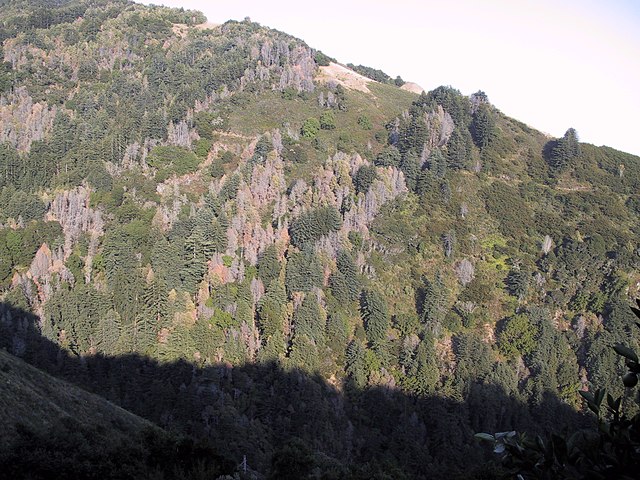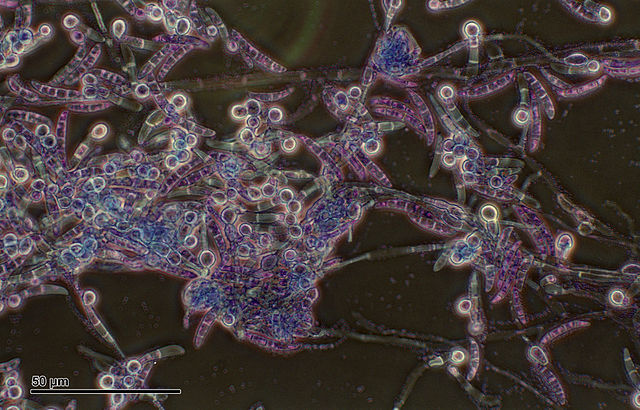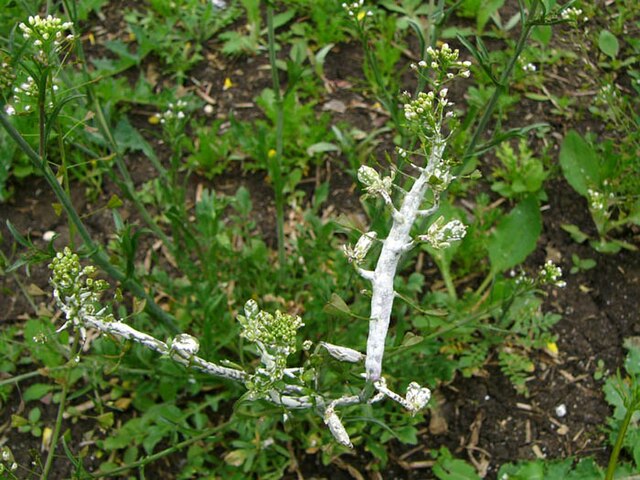Phytophthora ramorum is the oomycete known to cause the disease Sudden Oak Death (SOD). The disease kills oak and other species of trees and has had devastating effects on the oak populations in California and Oregon, as well as being present in Europe. Symptoms include bleeding cankers on the tree's trunk and dieback of the foliage, in many cases leading to the death of the tree.
Phytophthora ramorum
A hillside in Big Sur, California, devastated by sudden oak death
The Oomycetes, or Oomycota, form a distinct phylogenetic lineage of fungus-like eukaryotic microorganisms within the Stramenopiles. They are filamentous and heterotrophic, and can reproduce both sexually and asexually. Sexual reproduction of an oospore is the result of contact between hyphae of male antheridia and female oogonia; these spores can overwinter and are known as resting spores. Asexual reproduction involves the formation of chlamydospores and sporangia, producing motile zoospores. Oomycetes occupy both saprophytic and pathogenic lifestyles, and include some of the most notorious pathogens of plants, causing devastating diseases such as late blight of potato and sudden oak death. One oomycete, the mycoparasite Pythium oligandrum, is used for biocontrol, attacking plant pathogenic fungi. The oomycetes are also often referred to as water molds, although the water-preferring nature which led to that name is not true of most species, which are terrestrial pathogens.
![Sexual structures (only oogonia, antheridia not shown) of Saprolegnia.[citation needed]](https://upload.wikimedia.org/wikipedia/commons/thumb/e/ef/Oomy1002L.jpg/640px-Oomy1002L.jpg)
Sexual structures (only oogonia, antheridia not shown) of Saprolegnia.[citation needed]
Pythium sp. (Peronosporales), which causes pythiosis in animals, under microscope.
Symptom of late blight (P. infestans, Peronosporales) on the underside of a potato leaf.
Albugo candida (Albuginales) on shepherd's purse (Capsella bursa-pastoris, Brassicales).



![Sexual structures (only oogonia, antheridia not shown) of Saprolegnia.[citation needed]](https://upload.wikimedia.org/wikipedia/commons/thumb/e/ef/Oomy1002L.jpg/640px-Oomy1002L.jpg)


